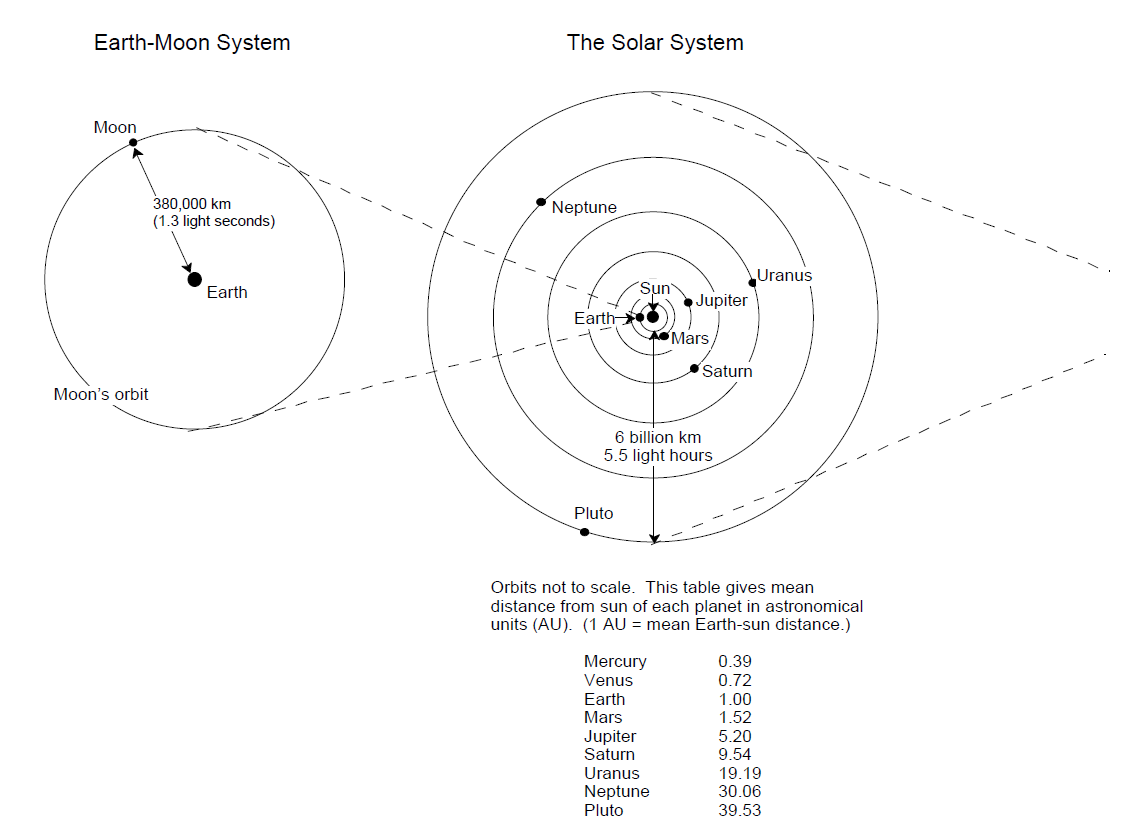
The Universe in Six Steps
 المؤلف:
Diane Fisher Miller
المؤلف:
Diane Fisher Miller
 المصدر:
Basics of Radio Astronomy
المصدر:
Basics of Radio Astronomy
 الجزء والصفحة:
p75
الجزء والصفحة:
p75
 28-2-2016
28-2-2016
 2222
2222
The Universe in Six Steps
The vastness of the universe is unimaginable for us humans. Perhaps the best we can do is to try to conceive a model of the universe that begins to show us our relative size and position, at least in our local neighborhood.
Gareth Wynn-Williams in The Fullness of Space uses the following analogy to help demonstrate some of these distances:
Some idea of the vastness of the Universe may be gained by considering a model in which everything has been scaled down by a factor of a billion. In this model the Earth would have the dimensions of a grape. The Moon would resemble a grapeseed 40 cm away while the Sun would be a 1.4-meter diameter sphere at a distance of 150 meters. Neptune would be more than 4 km away. On this one-billionth scale, the nearest star would be at a distance of 40,000 km – more than the actual diameter of the Earth. One would have to travel five thousand times farther yet to reach the center of the Milky Way Galaxy, another 80 times farther to reach the next nearest spiral galaxy, and another several thousand times farther still to reach the limits of the known Universe.
To further make our point, the following drawings (from Kraus, 1986) represent the universe in six steps: (1) the Earth Moon system, (2) the solar system, (3) the solar neighborhood, (4) our galaxy, (5) the galactic neighborhood, and (6) the universe.



 الاكثر قراءة في مواضيع عامة في علم الفلك
الاكثر قراءة في مواضيع عامة في علم الفلك
 اخر الاخبار
اخر الاخبار
اخبار العتبة العباسية المقدسة


